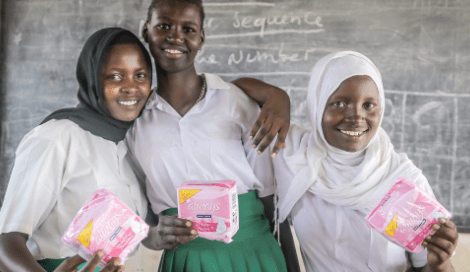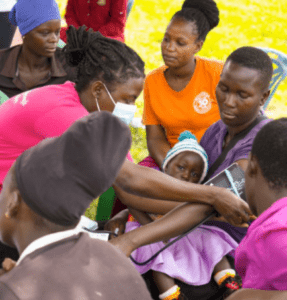In many parts of the world, education is considered a basic right for every child. However, for millions of girls, attending school regularly is a challenge due to an issue that often goes unaddressed: the lack of access to sanitary pads. Menstruation, a natural and inevitable part of life, becomes a source of shame, stigma, and exclusion when girls cannot manage their periods effectively. This blog explores how the absence of menstrual hygiene products impacts girls’ education and why addressing this issue is critical for gender equality and empowerment.
The Reality of Menstruation for Girls in Low-Income Communities
For girls in low-income areas and rural communities, menstruation can be an overwhelming experience. Many lack access to sanitary pads or other menstrual hygiene products due to financial constraints, inadequate health education, and cultural stigma. As a result, girls are often forced to use unsafe, makeshift alternatives like rags, leaves, or old cloth, which can lead to infections and discomfort.
Beyond the physical challenges, menstruation brings emotional and social stress. Many girls feel embarrassed or ashamed of their periods, especially in cultures where menstruation is viewed as taboo. Without the right resources and understanding, they may choose to stay home rather than face humiliation or bullying at school.
Why Girls Miss School During Their Periods
The lack of access to sanitary pads has a direct impact on girls’ ability to attend school. Here’s why:
- Fear of Leaks and Embarrassment:
- Without proper menstrual products, girls worry about leaks, which can lead to visible stains on their clothes. The fear of being humiliated by classmates or teachers discourages them from going to school during their periods.
- Discomfort and Pain:
- Makeshift solutions like rags or leaves do not offer the same level of protection or comfort as sanitary pads. These alternatives can cause irritation, rashes, and even infections, making it difficult for girls to concentrate in class or participate in activities.
- Inadequate Hygiene Facilities:
- Many schools in low-income areas lack private and clean facilities for girls to manage their menstruation. Without access to proper toilets, water, and disposal bins, girls may opt to stay home during their periods rather than struggle with inadequate hygiene infrastructure.
- Cultural Stigma and Taboos:
- In some cultures, menstruation is shrouded in stigma and girls are often isolated or discouraged from participating in normal activities while on their period. This includes going to school, playing sports, or engaging in community events, further alienating them from their peers and education.
The Impact on Education
Missing school due to lack of sanitary pads can have long-term consequences for girls’ education and future opportunities. Here are some key effects:
- Reduced Attendance:
- On average, girls miss 4-5 days of school each month due to menstruation. Over time, this adds up, resulting in significant learning gaps compared to their male peers.
- Lower Academic Performance:
- Irregular attendance leads to girls falling behind in their studies, which can affect their performance in exams and assignments. This, in turn, impacts their confidence and engagement in the classroom.
- Increased Dropout Rates:
- Continuous absenteeism during menstruation can cause some girls to fall so far behind in their studies that they decide to drop out altogether. Once out of school, these girls are more likely to face early marriage, teenage pregnancy, and limited job opportunities, perpetuating cycles of poverty and gender inequality.
- Missed Opportunities for Empowerment:
- Education is one of the most powerful tools for breaking the cycle of poverty. When girls miss out on education due to menstruation, they lose the opportunity to gain the skills and knowledge needed to improve their lives and contribute to their communities.
The Role of Sanitary Pads in Keeping Girls in School
The solution to this issue is simple yet profound: providing access to affordable, safe, and hygienic menstrual products like sanitary pads. Here’s how this small change can make a big difference:
- Improved Attendance:
- When girls have access to sanitary pads, they are more likely to attend school regularly, even during their periods. This helps them stay on track academically and reduces the risk of falling behind.
- Boosted Confidence:
- Having sanitary products allows girls to manage their periods with dignity and confidence. They no longer have to worry about leaks, stains, or embarrassment, allowing them to focus on their studies and participate fully in school life.
- Better Health and Hygiene:
- Sanitary pads reduce the risk of infections and discomfort associated with using unsanitary alternatives. This not only improves girls’ physical well-being but also promotes a healthier learning environment.
- Breaking the Stigma:
- Providing menstrual hygiene education alongside sanitary products helps to break down the stigma and taboos surrounding menstruation. By normalizing the conversation about periods, girls and boys alike can learn to view menstruation as a natural and healthy part of life.
Addressing the Issue: A Call to Action
Solving the problem of period poverty requires collective action from governments, non-profit organizations, schools, and communities. Key steps include:
- Providing Free or Affordable Sanitary Products: Governments and NGOs can implement programs to distribute free or low-cost sanitary pads to girls in schools, especially in low-income areas.
- Menstrual Hygiene Education: Educating both boys and girls about menstruation helps break the stigma and ensures girls feel supported during their periods.
- Improving School Facilities: Schools must be equipped with clean, private, and safe hygiene facilities where girls can manage their periods with dignity.
- Community Involvement: Engaging communities in discussions about menstruation and girls’ education can help shift cultural attitudes and promote gender equality.
Conclusion
The lack of sanitary pads is more than just a personal challenge for girls; it is a barrier to their education, empowerment, and future. By addressing this issue head-on and ensuring that every girl has access to menstrual products, we can help girls stay in school, reach their full potential, and create a brighter future for themselves and their communities. Every girl deserves the opportunity to learn without limitations, and providing them with the resources to manage their periods is a critical step in achieving that goal.



